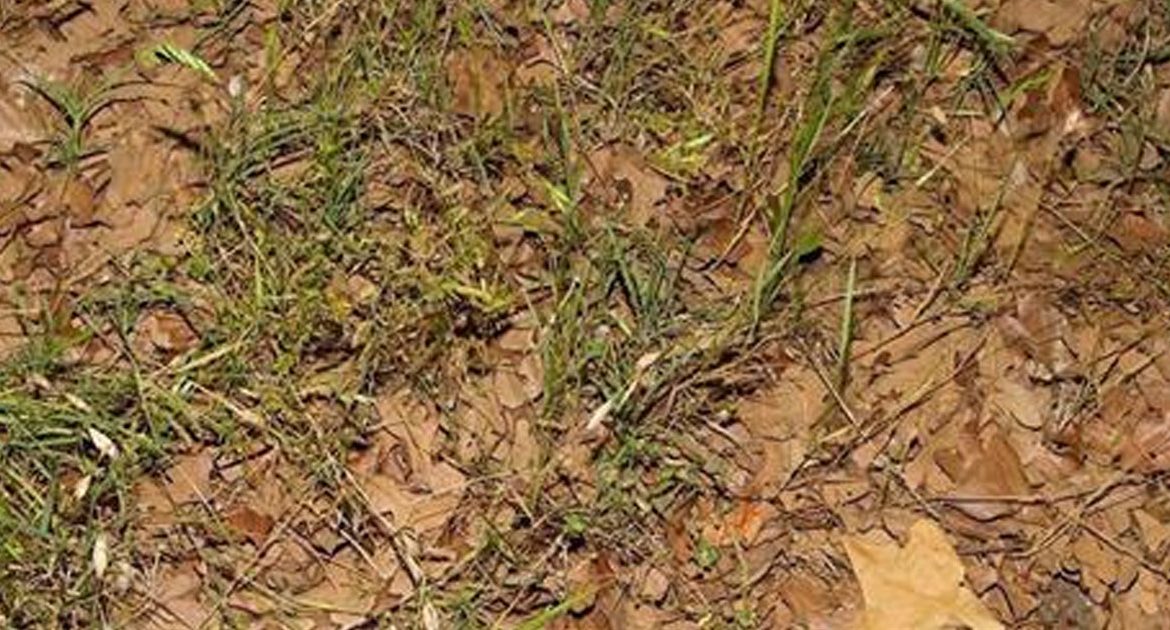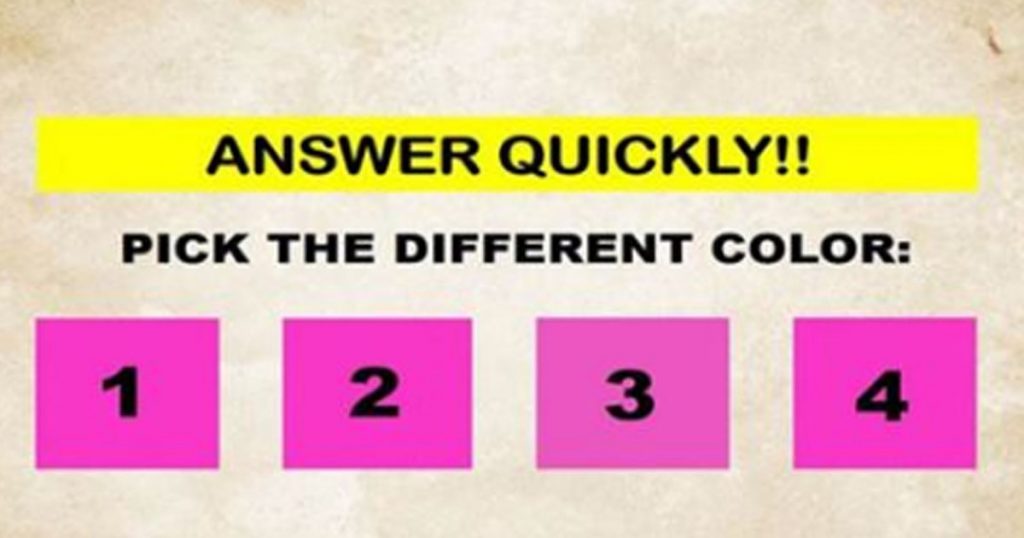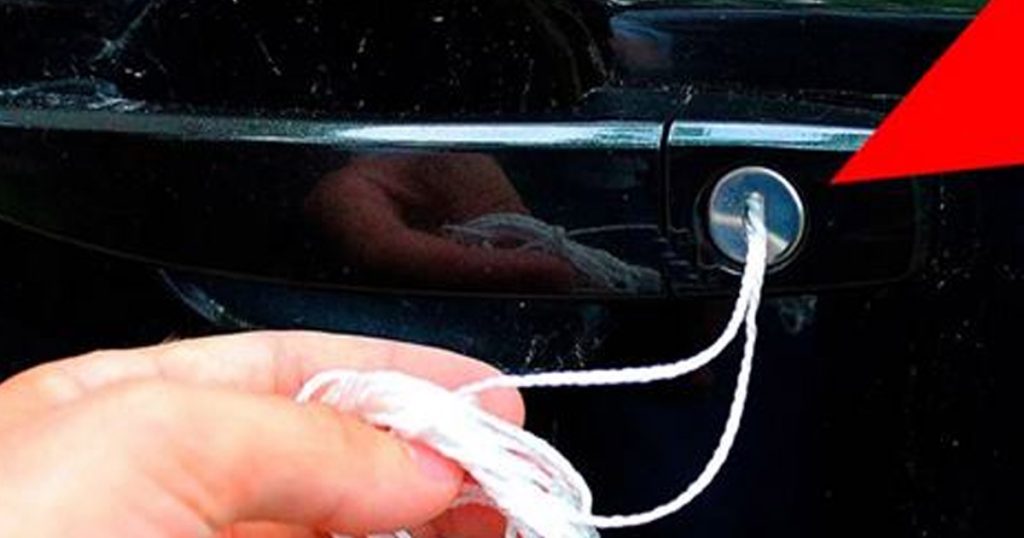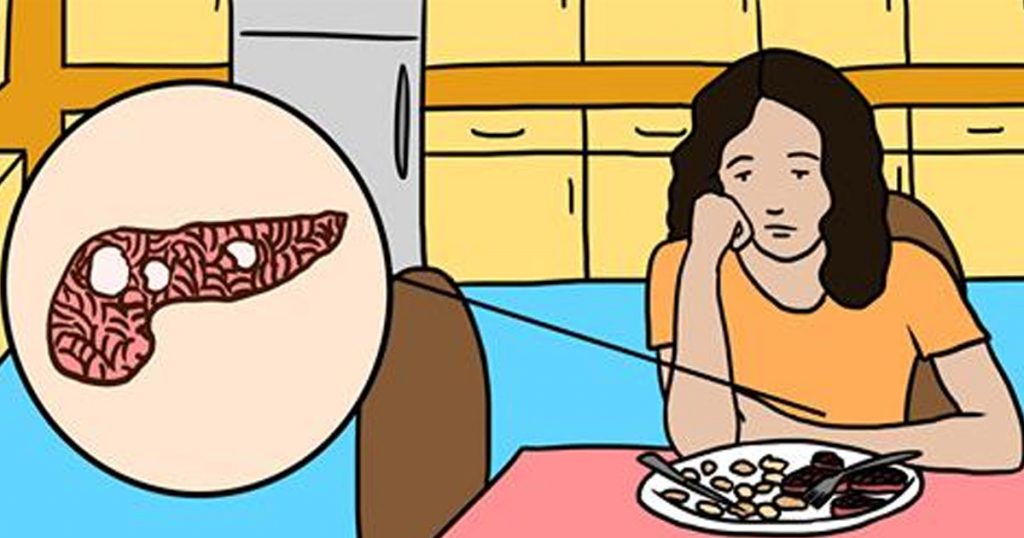It’s springtime, and that means that the lethal copperhead snake is starting to emerge to enjoy the sunny weather.
As a rule, snakes won’t bother you unless you bother them first.
However, many snakes have excellent camouflage, so it can be really easy to accidentally sneak up on a snake hiding out in the brush.
This lesson is true all over the world, as we saw with the mom who took a photo of her daughter and didn’t notice the venomous snake in the background until later.
Here in America, the same thing can happen with poisonous snakes such as the copperhead, cottonmouth, and rattler.
That’s why a commonplace photo of the forest floor has so many people shaken up.
The image below has a snake hiding in it, but most people can’t find it for the life of them.
Scroll through to see if you can spot the snake, and learn the signs to watch for.
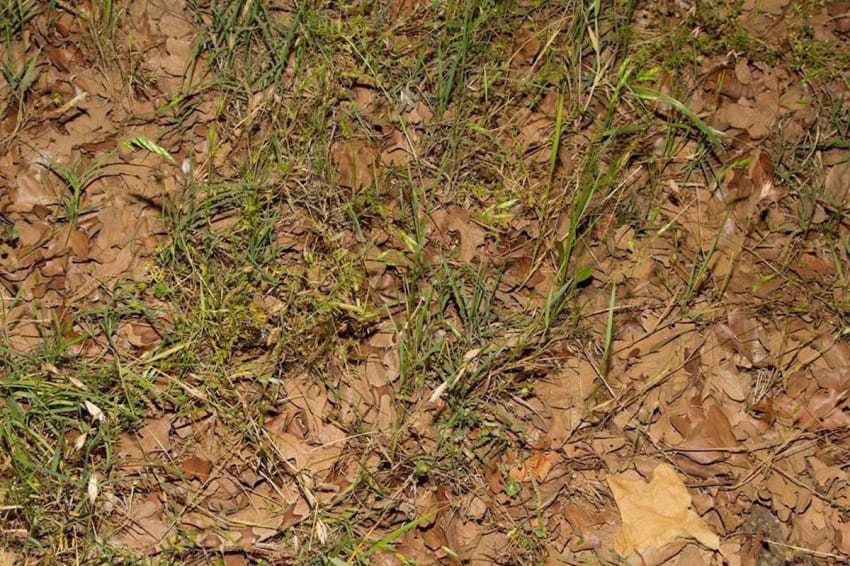
There’s a poisonous copperhead snake hiding in this photo, but he is almost impossible to spot.
Do you you see the sneaky creature hiding in plain sight?
It’s not easy, so take a nice long look, then scroll through below for a hint.
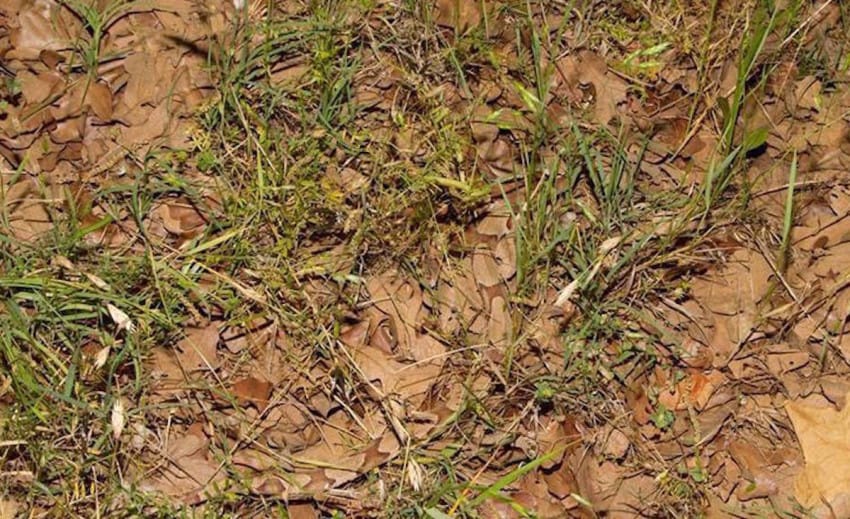
Here’s a closeup shot of the bottom-left of the image. This is where the snake is hiding out.
Do you see him now?
If not, scroll through for the reveal! Click the photo below for the answer.
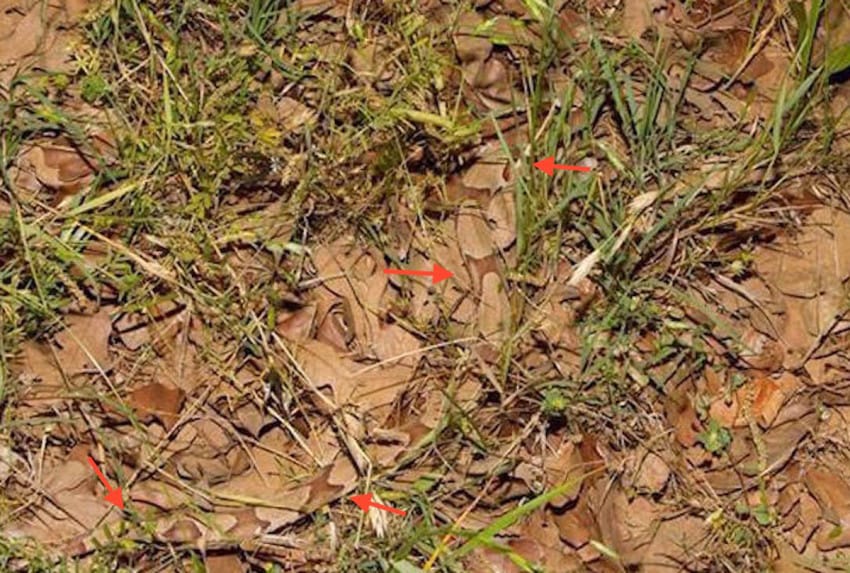
Check it out: this clever snake totally concealed himself in the leaves.
If you follow the arrows, you can see the pattern of his scales peaking out from the grass and leaves.
It’s also worth noting that it’s an alarmingly large snake, appearing to extend several feet even when coiled up.
Wikimedia Commons
Here’s another similar photo of a copperhead who hasn’t camouflaged himself quite as perfectly.
This snake is pretty visible once you notice the regular pattern in the leaves.
These snakes live up and down the East Coast of the United States. Their habitat ranges from central Texas all the way up to Massachusetts.
They usually try to avoid populated areas, but it’s very easy to run into them if you’re hiking or taking your dog on a walk in the woods.
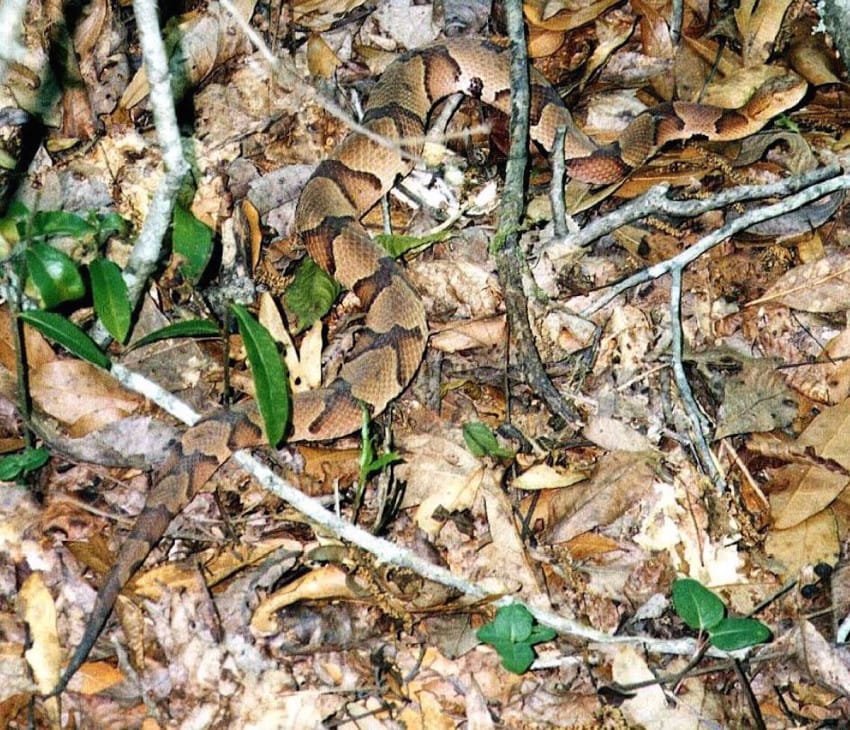
If you happen to be out and about in the woods this spring, watch out for snakes that are just minding their own business in the brush.
If you walk over areas with a lot of fallen leaves, look out for unusually regular patterns on the ground. Also, keep an eye out for sudden movement.
A copperhead is more likely to slither away than attack. However, they will be on the defensive if cornered or chased down by an excitable pup.
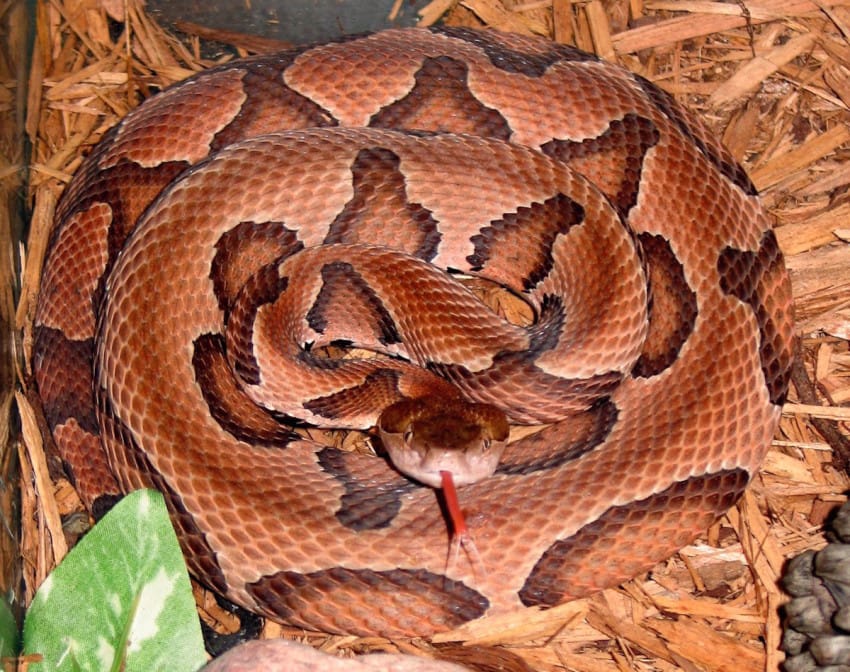
And while you should never approach or touch any wild snake, you should learn how to identify the pattern of a deadly copperhead.
According to Outdoor Basecamp, copperheads can be identified by their:
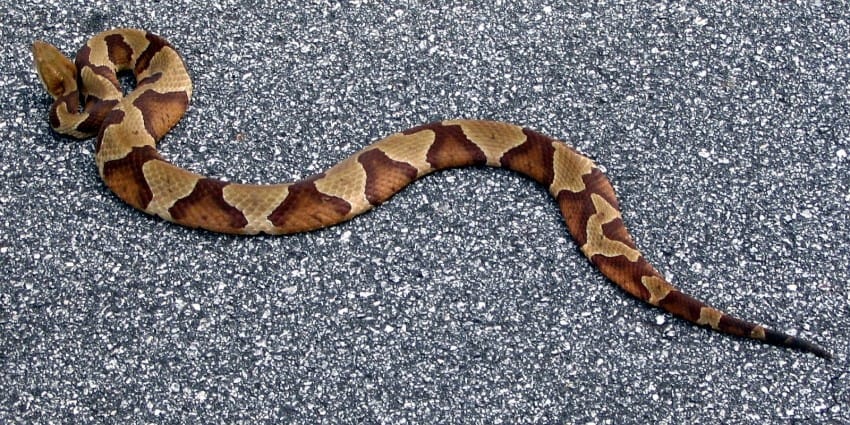
Wide, irregular bands that are darker than their background color
Triangular/heart-shaped head, which is generally two-toned

If a copperhead bites you, a family member, or a pet, seek medical attention straight away. This bite can be lethal.
Also watch out for symptoms in children and animals:
Swelling and redness around suspected bite site
- Twin puncture wounds
- Difficulty breathing
- Nausea and vomiting
- Sweating and salivating

What do you think, would you be able to spot a copperhead in your path?
If you live in an area with poisonous snakes, be sure to learn how to spot these snakes and identify symptoms of a snakebite.
And don’t forget to Liked Video this important information with friends and family as snakes come out of hibernation this summer!
